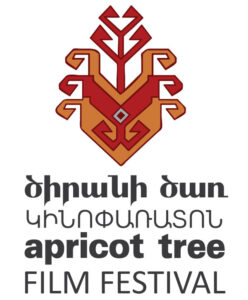Hakob Hovnatanian/Հակոբ Հովնաթանյան

Hakob Hovnatanian/Հակոբ Հովնաթանյան
Armenian SSR, 1967, 10’
no dialogue
Director and Scriptwriter: Sergey Parajanov
Cinematographer: Karen Mesyan
Composer: Stepan Shakaryan
Production Company: Hayfilm Studio
In this 10-minute short, Sergei Parajanov recreates the feel and atmosphere of 19th century Tbilisi through the paintings of Hakob Hovnatanian, the ‘Raphael of Tiflis’. Combining sights and sounds from both Hovnatanyan’s paintings and the city itself, Parajanov’s short documentary can be seen as a direct precursor to The Color of Pomegranates (1969), his masterpiece.
Sergei Parajanov
 Sergei Parajanov was born on January 9, 1924 in Tbilisi. Regarded by film critics, film historians, and filmmakers to be one of the greatest and most influential filmmakers in cinema history, Parajanov studied film at VGIK in Moscow and made his debut in 1954 with the film Andriesh. After directing Shadows of Forgotten Ancestors (1965) in Ukraine, Parajanov became internationally recognized as a leading figure in cinema. The Color of Pomegranates (1968), made in Armenia, is considered his ultimate masterpiece. In 1987, his film The Legend of Suram Fortress received the IFFR Rotterdam Award for the Most Innovative Film. Parajanov was aesthetically opposed to Soviet norms, which led to many of his projects being rejected by film studios and eventually to his arrest on falsified charges. He was sentenced to 5 years in a Ukrainian prison in 1974. A wave of international protests by the likes of Truffaut, Buñuel, Pasolini, and Antonioni followed. Many of Parajanov’s artworks – assemblages, collages, drawings – were created during his imprisonment. The last feature Parajanov completed was Ashik Kerib (1988), selected by Venice and New York, which won the European Film Academy Award (European Director). Parajanov passed away in 1990.
Sergei Parajanov was born on January 9, 1924 in Tbilisi. Regarded by film critics, film historians, and filmmakers to be one of the greatest and most influential filmmakers in cinema history, Parajanov studied film at VGIK in Moscow and made his debut in 1954 with the film Andriesh. After directing Shadows of Forgotten Ancestors (1965) in Ukraine, Parajanov became internationally recognized as a leading figure in cinema. The Color of Pomegranates (1968), made in Armenia, is considered his ultimate masterpiece. In 1987, his film The Legend of Suram Fortress received the IFFR Rotterdam Award for the Most Innovative Film. Parajanov was aesthetically opposed to Soviet norms, which led to many of his projects being rejected by film studios and eventually to his arrest on falsified charges. He was sentenced to 5 years in a Ukrainian prison in 1974. A wave of international protests by the likes of Truffaut, Buñuel, Pasolini, and Antonioni followed. Many of Parajanov’s artworks – assemblages, collages, drawings – were created during his imprisonment. The last feature Parajanov completed was Ashik Kerib (1988), selected by Venice and New York, which won the European Film Academy Award (European Director). Parajanov passed away in 1990.
